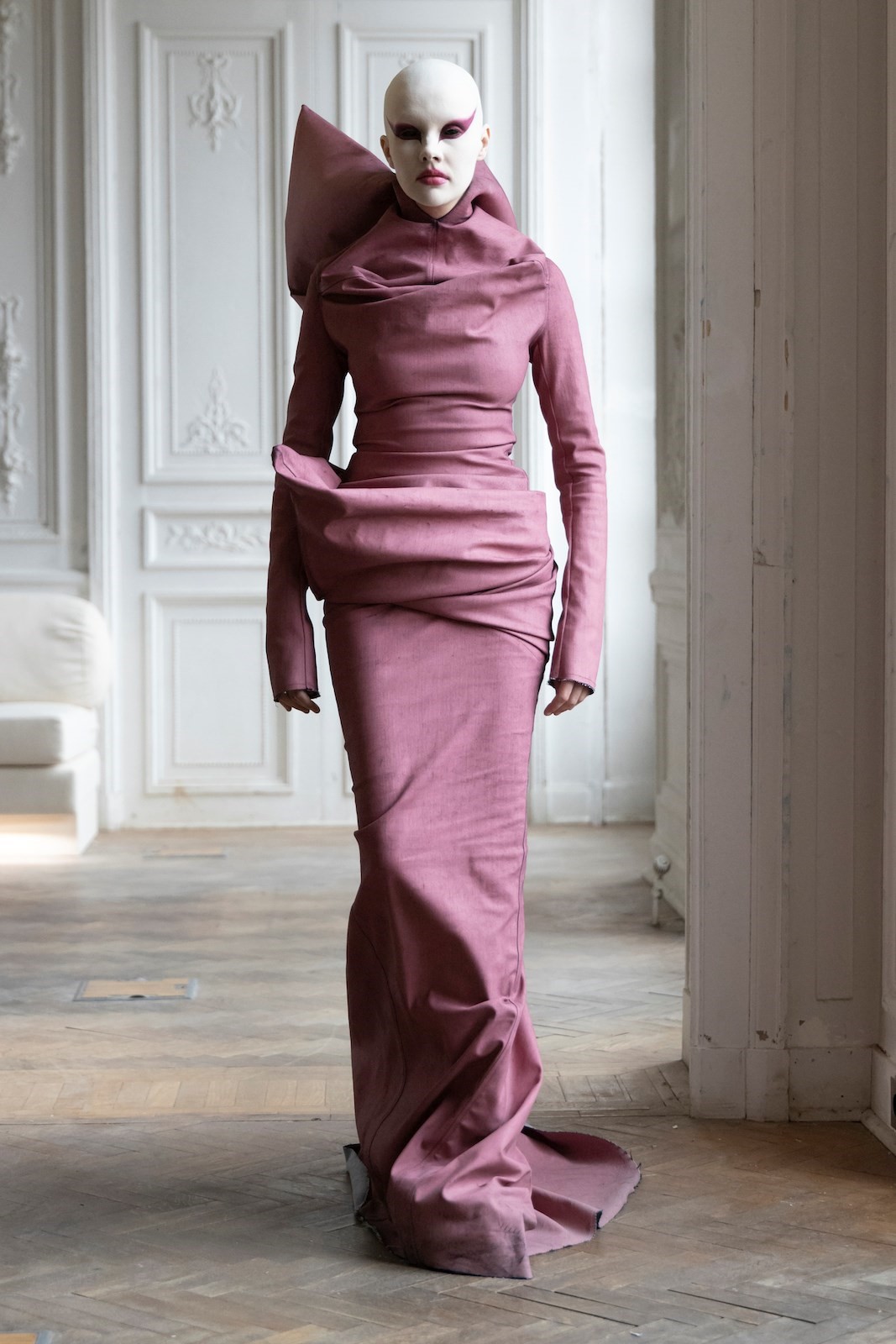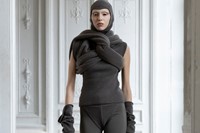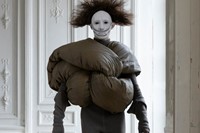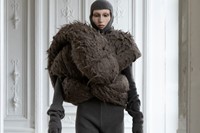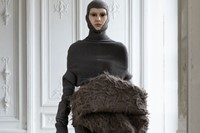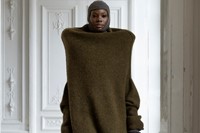There’s plenty of history blustering around this Autumn/Winter season in fashion’s echo chamber, heritage houses drawing on their own seemingly inexhaustible archives, but also exploring a wider scope of costume history. I’ve never seen so many bustles and panniers and corseted waists, at least not out of a costume drama.
Rick Owens has a position shared by few – the history he inhabits belongs to him, and him alone. He’s crafted every piece of it. And that history is also wider, not just about the clothes he’s created but, arguably, a major addition to the discourse around the definition of an American fashion identity. There’s no accident in the fact that Owens is a passionate admirer of Charles James – demonstrative of his fervour, he even recreated the famous James four-leaf clover ball gown (that we shot for AnOther). And Owens shares James’ obsessions and technical wizardry if, fortunately, not his wilfully self-destructive streak. He also shares an obsession with his own oeuvre, with perfecting his own signatures and signifiers. “The further I go along, the more I’m going to repeat myself because I don’t have that many stories,” he once told me, humbly (another trait he doesn’t share with James). “My interests are just as narrow and bigoted as everything that I fight against.”
I’d argue that takes self-deprecation a step too far, given the breadth and depth of Owens’ latest collection. As with his menswear back in January, it was shown in his Paris headquarters and home, and named Porterville after the Californian town where Owens grew up. It was, he said, a recollection of growing up as “an overly sensitive young sissy” in a judgemental small town. The automatic reaction to that hostility is, perhaps, to retreat to home, a space of comfort and protection.
But for Owens, home was something else. It’s a place where a stern father banned television and plunged Owens into a universe of classical music and opera – Puccini, Wagner, Purcell, Strauss, Ravel’s Pavane pour une infante défunte, which soundtracked the show in a synthesised form. It’s also where he read the pulpy fantasy writing of Edgar Rice Burroughs. They seem disjointed, but those operas and those books – each peopled with fantastical characters, in fantastical clothes – inspired a longing for somewhere else, and something else. Certainly not Paris, but rather another world people by impossible creatures. Oddly, in his way, that’s what Owens has created, in his “compound” in Paris, and through his exceptional, unearthly collections.

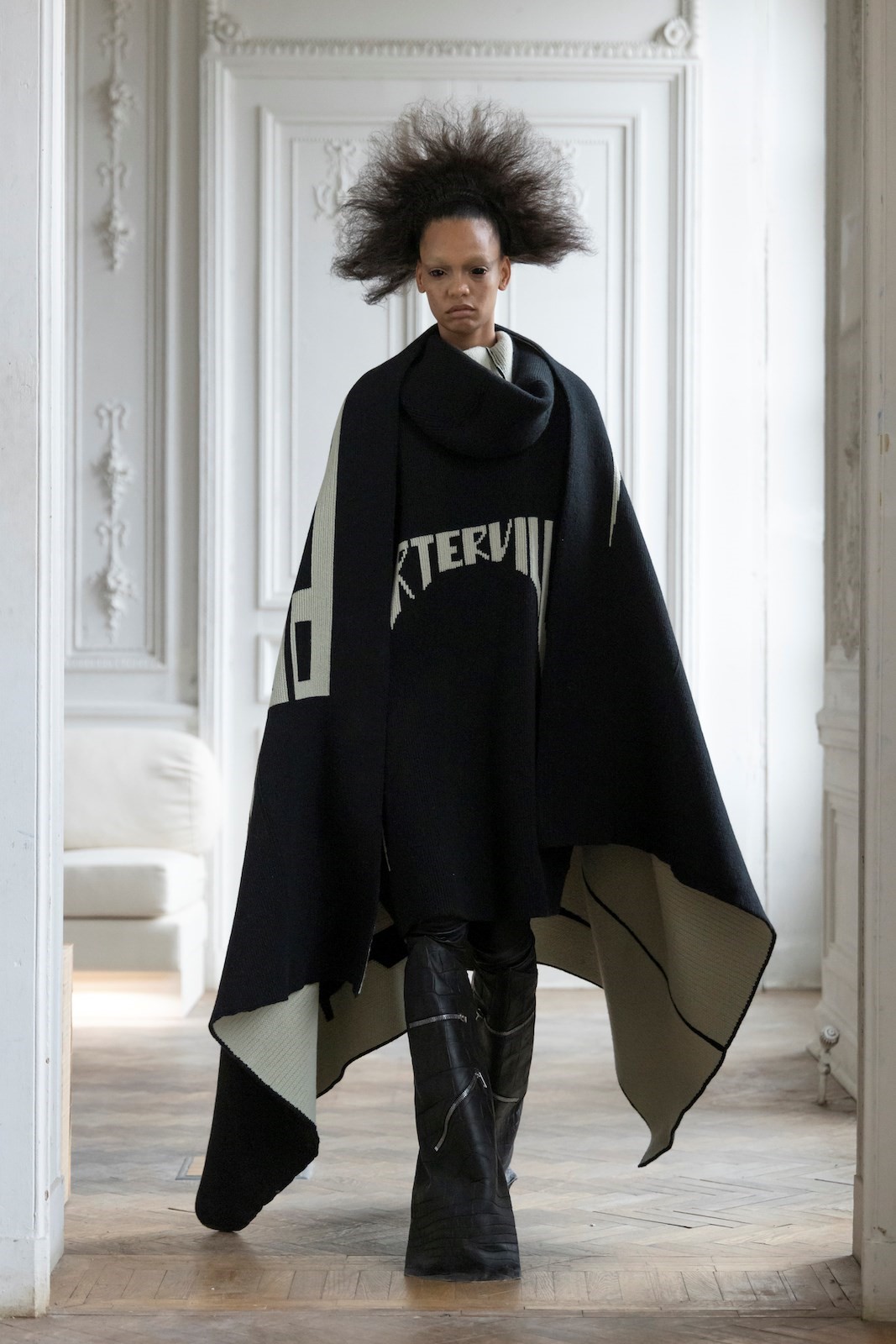
So, in this collection there were knit cashmere or alpaca ‘spacesuits’, worn with robes with skyward-pointing shoulders in more knits, or Austrian lodens made with methods dating back to the 19th century. And there were plenty of references to Owens’ histories, but also a sphere of American design. I am sure he loathes the word sportswear, but there’s something of its ease in Owens’ reimagining of these dramatic or barbaric shapes in the softest, easiest wools. And as much as I thought of Maria Callas in her outré opera costumes, or science fiction villains in swirling capes, I thought of Roy Frowick Halston and, dare I say, Donna Karan. Owens has his own seven easy pieces, but they comprise jumpsuits and Kiss-inspired platform boots, padded stoles and cropped bomber jackets. Yet they are a system for dressing in a luxurious yet comfortable manner – something supremely American.
Let ratchet up other Americanisms in Paris this time. His stoles (another throwback, I mean who wears a stole in 2024?) are ring-shaped, and Owens calls them doughnuts. There was plenty of denim, and sweatshirts, and even a varsity-esque “Porterville” slogan embroidered across a couple of ponchos. Owens’ signature duvet jackets, meanwhile, were made in “Marlene Dietrich charmeuse,” he said, echoing old-school Hollywood glamour. The recycled bike-tyre skirts and shrouds were distinctly Mitteleuropa – they were made by a Parisian BDSM supplier – yet they too were cut with a line that echoed 30s glamour, a period Owens returns to again and again, betraying his own roots in the Day Of The Locust underbelly of Los Angeles. A pair of bias-knitted long-line dresses with folded capes – ice blue over greige, custard yellow over flushed pink – were plainly, timelessly gorgeous. Owens is stereotyped as a dark prince of elegance, but his colour sense is sublime.
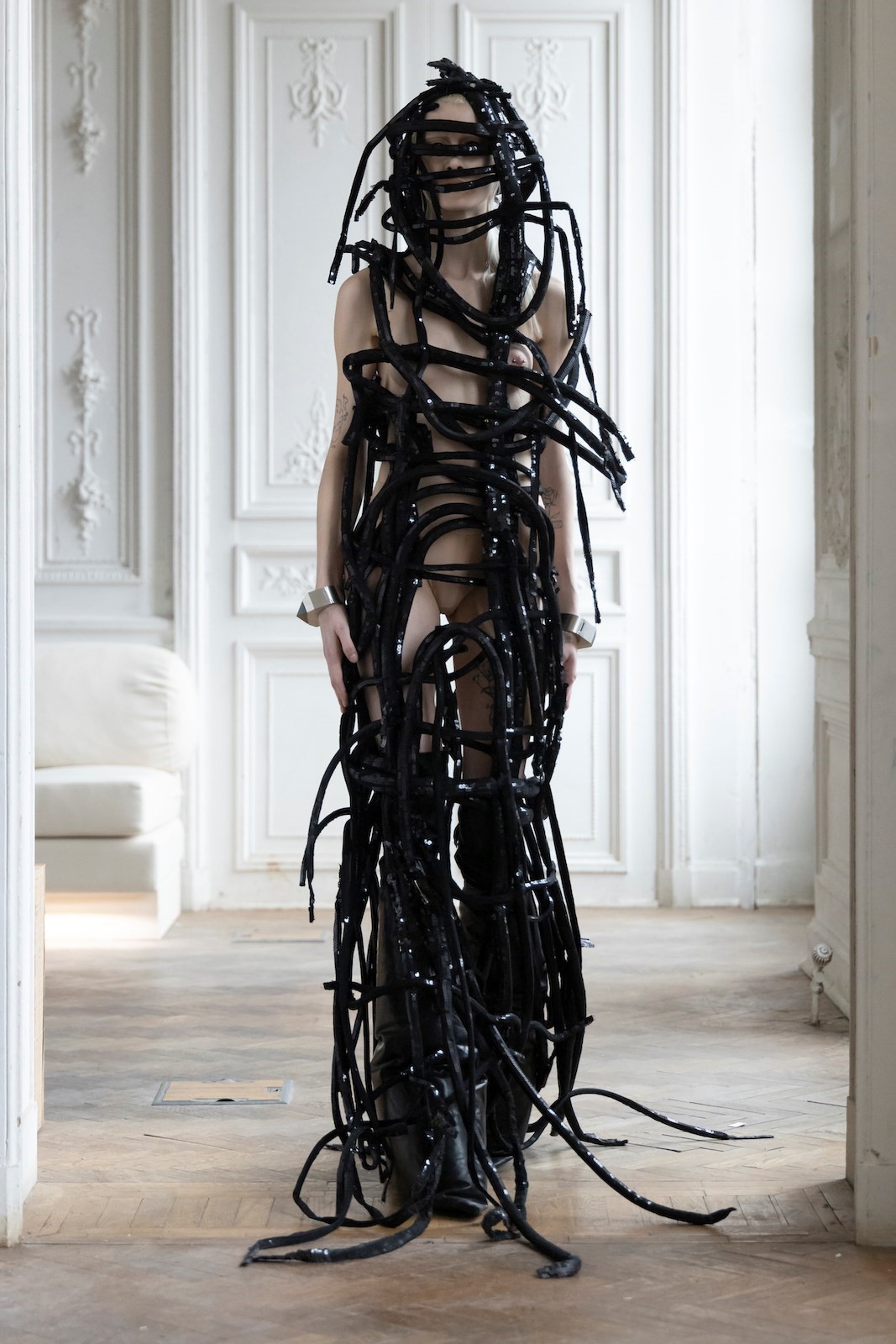
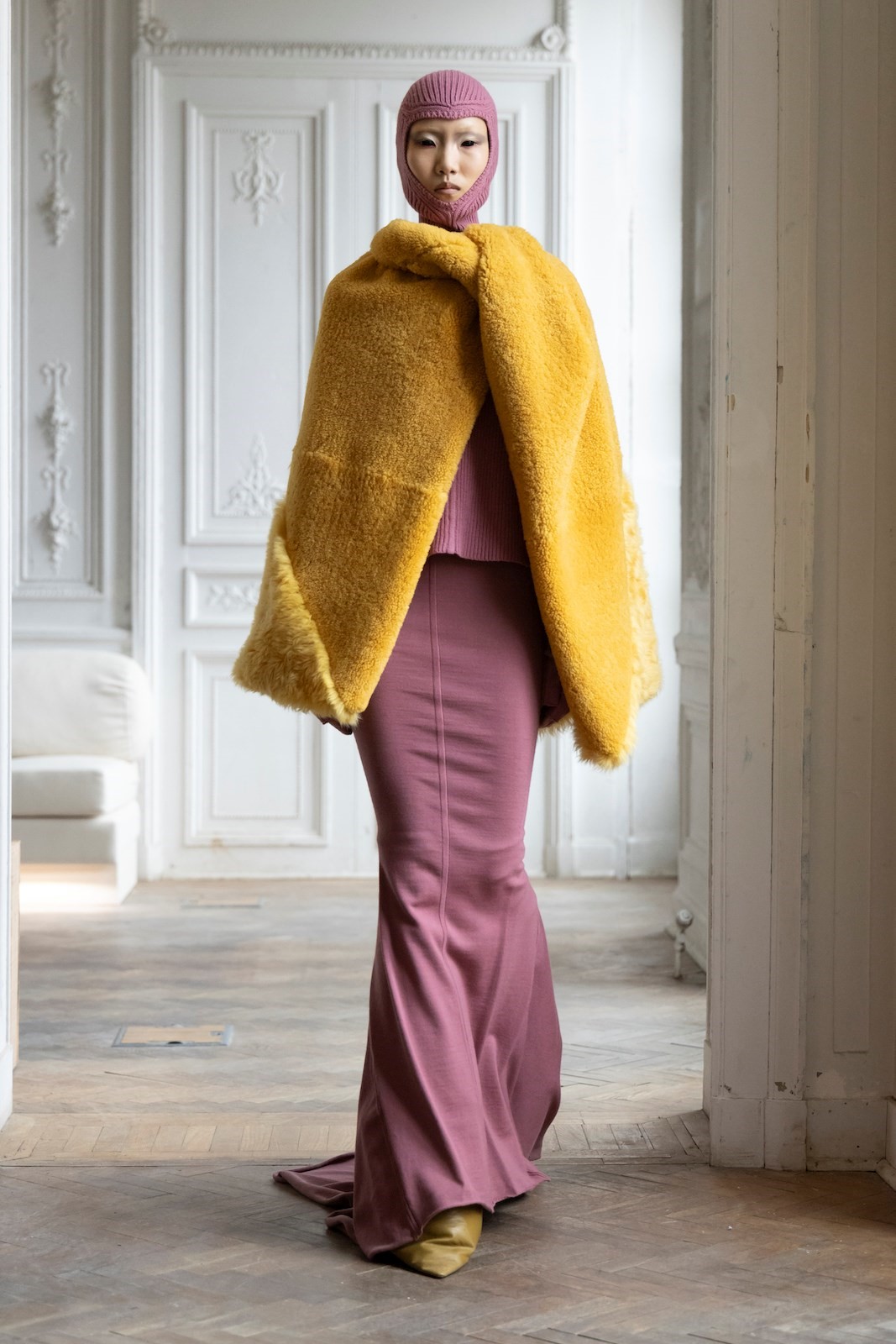
Maybe I’m reading too much into all this, seeing a potted personal because Owens showed in his home. And yet, that’s a decision he made wilfully, knowingly. “It just needs to be a pure expression,” Owens told me of his catwalk shows. “So I can take risks. And there’s also this tiny side, it sounds really disingenuous and falsely modest, which I can do, but honestly so often it’s like, ‘Well, I don’t really think anybody’s really watching anything, so we can kind of do whatever. We can have fun’.”
The trouble is, everyone is watching Owens. These are clothes that have shifted and shaped fashion, and will continue to do so. Rather than reflecting history, they’re really making it.
